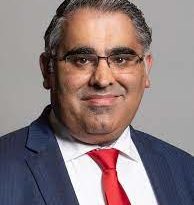Baroness Hodgson of Abinger – 2016 Parliamentary Question to the Department of Health
The below Parliamentary question was asked by Baroness Hodgson of Abinger on 2016-02-22.
To ask Her Majesty’s Government how many (1) children under 9 years of age, (2) children aged between 9 and 16 inclusive, and (3) adults over 18, have been diagnosed with autism in each of the last five years.
Lord Prior of Brampton
The number of children, young people and adults diagnosed with autism by the National Health Service is not collected centrally. Latest figures from the School Census (2015) state that there were 90,775 pupils with an autistic spectrum disorder at state funded schools and non-maintained special schools in England. This has increased from a total of 56,250 in 2010 who were recorded as having a primary need of autism, but it is not directly comparable to the 2015 figures because of a change in collection methodology. Local authority areas provide information for Public Health England’s annual self-assessment exercise on implementing the Autism Strategy. This includes the number of adults receiving an autism diagnosis but because information is submitted on a voluntary basis a complete total for England is not available.
The Department has discussed with NHS England the difficulties that people on the autistic spectrum can have in getting an appropriate diagnosis and support in a timely manner. NHS England has commenced a programme to visit clinical commissioning groups to identify and share good practice in accessing autism diagnosis, and look at possible barriers. The Department is funding the Association of Directors of Adult Social Services to support this work. NHS England will complete a report on this by the end of April 2016.
The Department is also encouraging the autism third sector to work together and the four charity representatives on the Cross Government Autism Programme Board, which oversees the implementation of the Autism Strategy, gave presentations at the meeting on 18 February on work they are doing to increase public awareness. The charities are the National Autistic Society, the Autism Alliance UK, Autism Plus and Ambitious about Autism. The Autism Alliance UK is also being funded by the Department to undertake work with national and local organisations, to make reasonable adjustments to services and to train staff to be aware of what autism can mean to individuals who have the condition and their families.
The Health and Social Care Information Centre’s publication Estimating the Prevalence of Autism Spectrum Conditions in Adults – Extending the 2007 Adult Psychiatric Morbidity Survey (APMS) gave the overall prevalence of autism in England as 1.1% (95% confidence interval 0.3% to 1.9%). Among adults with learning disabilities living in private households whose learning disability was sufficiently severe that they could not have taken part in the 2007 APMS, the prevalence of autism was 35.4% (95% confidence interval 24.7% to 46.2%). Among adults with mild or severe learning disabilities living in communal care establishments, the prevalence of autism was 31% (95% confidence interval 23.9% to 38%). Detailed supporting information regarding the underlying data and how figures have been derived is found within the detail of the report, a copy of which is attached.
The APMS was repeated in 2014 and findings are scheduled to be published in September 2016.



